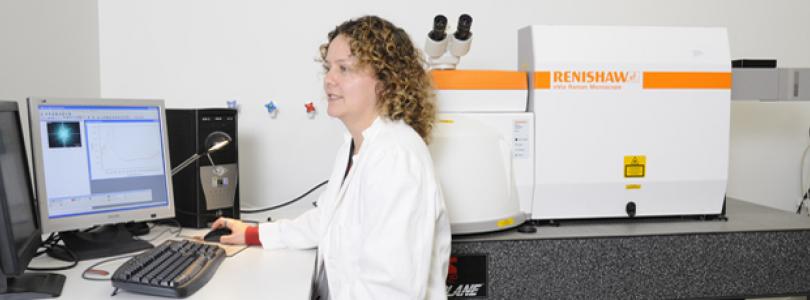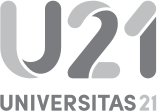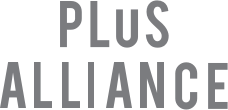
The Spectroscopy Laboratory has a focus on vibrational spectroscopy techniques, Raman and infrared, enabling chemical characterisation and micron-scale mapping of solids, liquids and powders.
The lab hosts:
- Two Raman spectrometers (one with photoluminescence capability)
- Two mid-FTIR spectrometers
- One mid/far-FTIR spectrometer coupled with a microscope
- Two UV-Visible-NIR spectrophotometers
1. Applications of vibrational spectroscopy
Raman and FTIR spectroscopy are powerful tools for chemical analysis, offering complementary information about a sample. Choosing the best technique depends on the specific property you're interested in.
Raman Spectroscopy
Raman spectroscopy analyses molecular symmetry and provides fingerprint identification of molecules. It works well with water-based samples and those opaque to infrared radiation. The technique is sensitive to vibrations involving changes in polarizability. This non-destructive technique uses light scattering to identify and map the chemical composition of various materials, including:
- Mineral identification - identification and mapping of titania phases
- Crystal strain measurement - strain imposed by defect structures in semiconductors
- Characterisation of carbon fullerenes and nanotubes
FTIR Spectroscopy
FTIR spectroscopy provides information about functional groups present in a molecule and excellent for studying hydrogen bonding and carbonyl groups. It works well with solids and liquids. This technique identifies functional groups within molecules. Our lab offers specialized equipment for:
- Microplastic analysis using high resolution micro-FTIR
Combining Techniques for a More Complete Picture
Using both Raman and FTIR spectroscopy together can be very beneficial for characterising unknown materials. By combining the strengths of both techniques, you can gain a more comprehensive understanding of the functional groups and molecular symmetry present. Examples include:
- Chemical characterisation and crystallinity determinations of polymers
- Chemical characterisation of polymers and small organic molecules via library matching
- Biological samples - mapping lipid and amino acid rich areas in cells
- Identification of metal-ligand bonds in complexes
- Compare Raman and FTIR spectra to reference libraries to identify unknown molecules
- Confirm findings from one technique with complementary information from the other to verify results
2. Applications of UV-Visible and Photoluminescence (PL) spectroscopy:
UV-Vis Spectroscopy
This technique measures the absorption or reflection of light across the ultraviolet, visible, and near-infrared regions, enabling applications like:
- Spectrophotometric assays for quantitative analysis of solutions
- Band-gap measurements of transparent films and solid thin films (UV-Vis and PL).
REFERENCING AND ACKNOWLEDGEMENT
We request that the Spectroscopy Laboratory be acknowledged in all publications and communications which result from access to our facilities and expertise. This information is required for reporting to funding bodies and provides a means of measuring our impact and is essential for our laboratory's continued support and expansion of its capabilities.
We recommend using the the following form of acknowledgement for the facility:
"The authors would like to acknowledge <insert name> of the Spectroscopy Laboratory within the Mark Wainwright Analytical Centre at the University of New South Wales for support."
If the spectra obtained were of a general nature then the names of specific Spectroscopy Laboratory staff members may be left out. However, if particular input was received from a member of the Spectroscopy Laboratory please acknowledge their assistance.






